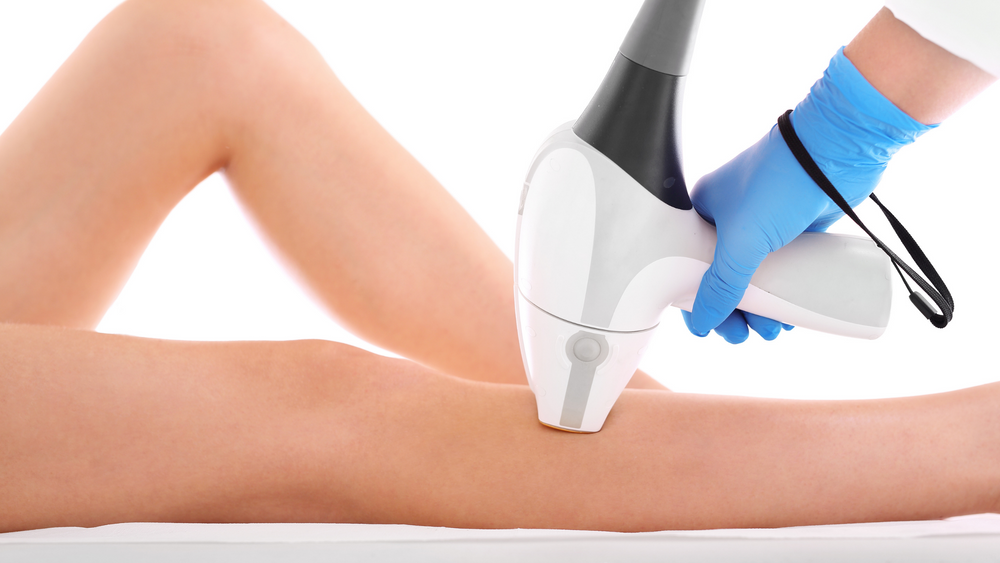
What Is Full Legs Laser Hair Removal?
Full legs laser hair removallower legs laser hair removal
During laser hair removal, an intense beam of light is applied to the treatment area. This light will damage the hair follicles and prevent them from growing again in the future. The hair follicles only respond to treatment when they are actively growing, and because follicles grow at different rates, laser hair removal is most effective after several treatments.
How does Laser Hair Removal Work
Laser hair removal is a hair removal method that first came to be back in the 1960s. The FDA had then approved the first ND: YAG lasers but the technique was left behind for some time as it needed more refining. It is in the 1970s that laser hair removal really improved and started to become very popular. Nowadays, a lot of men and women undergo full legs laser hair removal or even remove hair on their whole body.
The procedure uses a laser set on a specific wavelength and pulse duration. The light energy emitted by the laser targets the pigment in the hair. It will then travel down to the hair follicle. There the light energy will transform into thermal energy and damage the follicle beyond repair.
The goal is to damage the hair follicle enough so that it does not regenerate nor produce any new hair. The combination of repetitive full legs laser hair removal treatment will contribute to reducing hair growth by up to 90%. Laser hair removal is not permanent as per the FDA definition. However, a lot of patients experience permanent hair removal after six to twelve sessions.
How do I prepare for my laser session?
There are a few things a patient can do prior to coming in for their full legs laser hair removal session. They will need to shave the evening before or morning of their appointment. Laser hair removal on unshaven hair reduces the effectiveness and safety of the treatment. Clean your skin with soap and water to remove any creams or lotions.
Try to stay out of the sun the week prior to your appointment. While natural pigmentation does not make the procedure any less safe or efficient, tanning and artificial pigmentation do interfere. Indeed, the sun puts the skin in an “excited state”. If you end up exposed to direct sunlight, make sure you use a physical sunblock with a SPF 30 or above.
Make sure to report any medication you may be on. Indeed some drugs increase photosensitivity while others are contraindicated for laser hair removal. A patient must wait ten days after they stop taking antibiotics prior to their session. They will need to wait six months if taking Accutane. Hormonal treatments (such as birth control or hormone therapy) may interfere with the treatment since hair growth is mostly determined by hormones.
After your full legs laser hair removal session, remember to stay out of the sun for at least fourteen days. You must also apply a physical sunblock. Do not take a hot shower nor work out in the 24 hours after as the heat will still be under your skin.
How many sessions of full legs will I need?
The number of full legs laser hair removal a patient needs will vary on different factors. Dark skin and blonde haired people may need additional sessions. While six sessions is the industry minimum, people can need up to twelve. Each individual is unique and so will be their treatment. Skin complexion, hair color, hair texture, past hair removal history, medication, genetics, may all impact the results of laser hair removal as well.
However, the biggest factor influencing laser hair removal is the hair growth cycle. Laser hair removal only works when the hair is in the anagen phase of growth. Indeed, it is the only time when the hair and the follicle connect, allowing the energy to travel from the former to the latter. Unfortunately, only 20% of all body hair is in the anagen phase of growth at any point in time.
Therefore, the laser will be able to treat 18% up to 20% of body hair on a specific area. This explains why patients need several sessions. Furthermore, to let time for the skin to heal after a session and for hair to move into their next phase of growth, each session is spaced out six weeks.






































